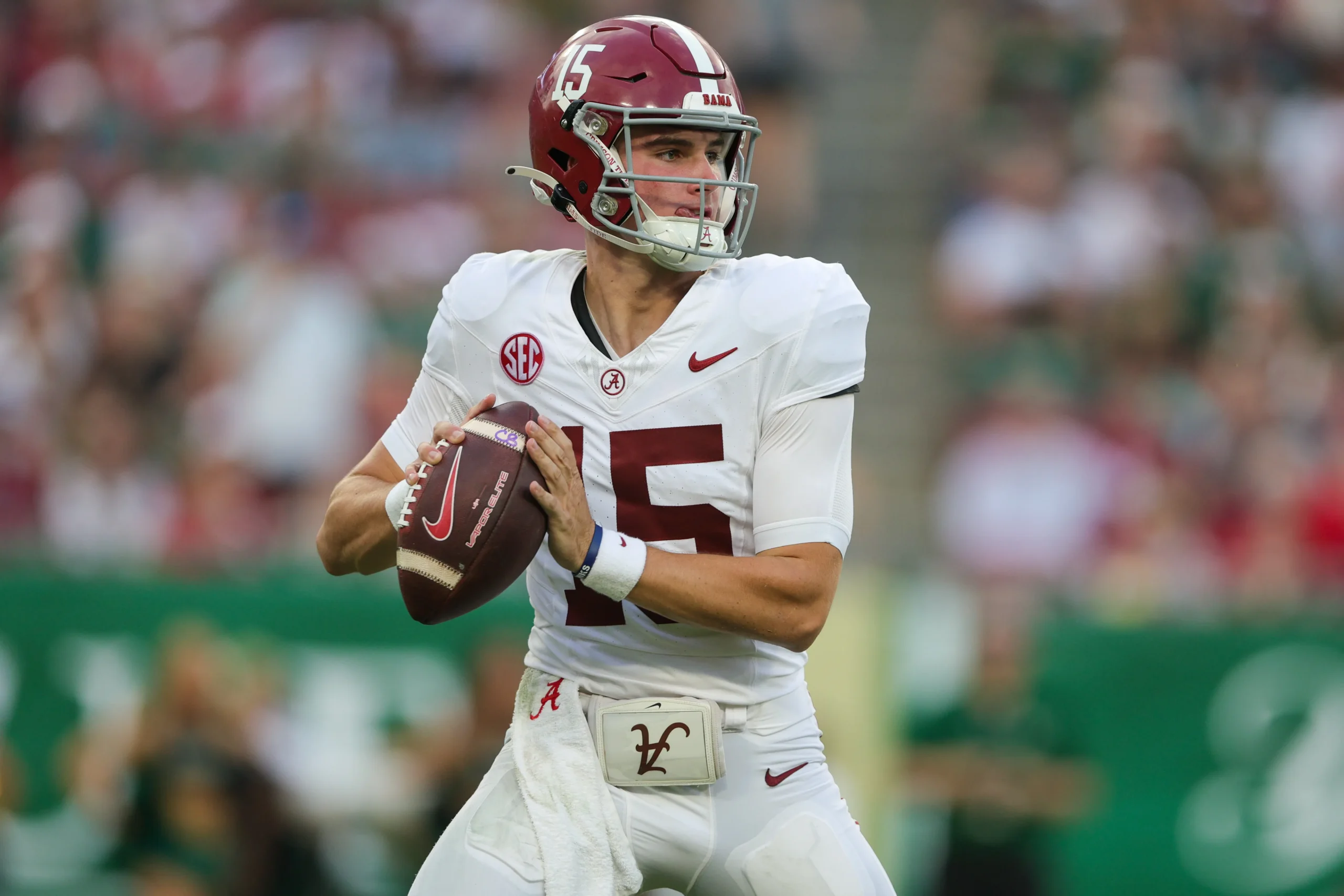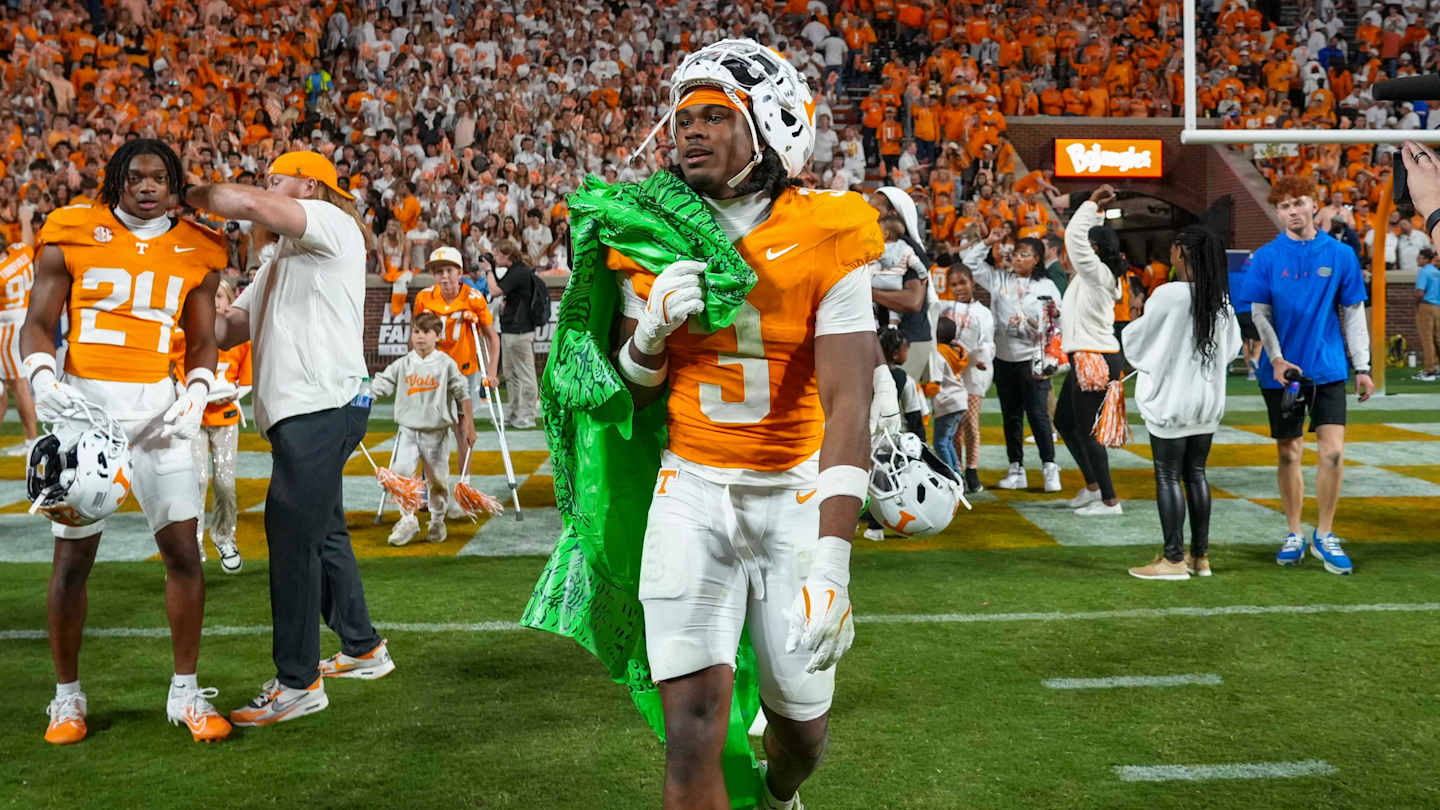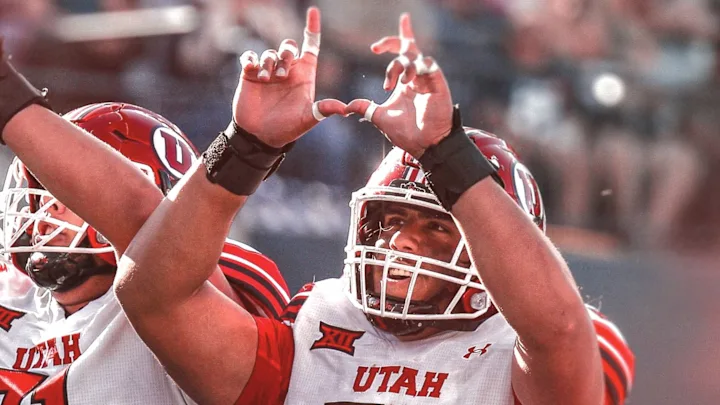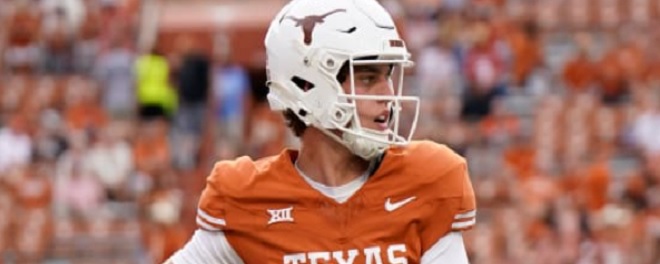By Charlie Campbell.
Send Charlie an e-mail here: [email protected]
Follow Charlie on Twitter @draftcampbell for updates.
This page was last updated April 18, 2017. Follow me @walterfootball for updates.
Position Review: Tight Ends
Tight End Class
Early-round talent: A+
Mid-round: A+
Late-round: A+
Overall grade: A+
2017 prospects vs 2016
O.J. Howard
David Njoku
Gerald Everett
Hunter Henry
Evan Engram
Austin Hooper
Jake Butt
Bucky Hodges
Jordan Leggett
Nick Vannett
Tyler Higbee
Michael Roberts
Seth DeValve
Temarrick Hemingway
Jerell Adams
David Morgan
The 2015 NFL Draft was terrible at the tight end position from start to finish. The 2016 class was almost just as bad. Finally, the NFL gets a talented class of tight ends as this class is truly phenomenal. It could go down as one of the best tight end classes in league history as there are good prospects for all three days of the 2017 NFL Draft.
If you were to merge the two classes, it would be a pure domination by the 2017 class. Howard and Njoku are better prospects than Henry. It isn’t even close between Henry and Howard. Everett and Henry are about equal, but I think Everett will be the more valuable weapon in the NFL, so I am giving him the edge. Engram is close to Henry and Everett as well. If it weren’t for Butt’s knee injury, he would be there with Engram and ahead of Hooper. Hodges and Leggett are third-round caliber prospects who are better than Vannett, who went in the third round last year. Roberts is a fourth-round caliber prospect like Higbee.
Aside from these prospects, there could be some mid-round and third-day steals in the form of Ashland’s Adam Shaheen, Florida International’s Jonnu Smith, Arkansas’ Jeremy Sprinkle, Iowa’s George Kittle and many more. In my opinion, I would rather have Shaheen, Smith, Sprinkle and Kittle over Vannett, who went in the third round last year.
Safest Pick: O.J. Howard, Alabama

This was an easy choice. Howard looks like a future difference-maker as a receiving weapon, a three-down starter, and a Pro Bowler. Howard is a big, fast tight end who can devastate teams as a receiver. In the NFL, he should be a dynamic mismatch weapon who is very tough for defenses to stop. Howard improved his run blocking over his time at Alabama to the point that he is a true three-down starter. Howard could be the best tight end prospect to enter the NFL since Vernon Davis in 2006.
My track record here is decent. Henry had a quality debut as a rookie. Walford is a solid role player for Oakland. Ebron was a disappointment, but played better in his third season. Ertz is a good tight end for the Eagles.
Previous Pick
2016: Hunter Henry
2015: Clive Walford
2014: Eric Ebron
2013: Zach Ertz
Biggest Bust Potential: Adam Shaheen, Ashland

I didn’t like any of the candidates because I think all of the early round tight end prospects will pan out. Shaheen could have the biggest bust potential, because he may not be able to make the jump from his level of football to the NFL. He runs well for being 6-foot-6, 278 pounds, but he could have issues separating from pro linebackers and safeties. Shaheen could go as high as the second round or as low as the fourth round. In a loaded tight end class, he looks like the riskiest selection.
My track record here is good. Vannett didn’t impress as a rookie, but it is too early to say he’s a bust. O’Leary was a sixth-round pick, so you can’t say that he is a true bust even though he didn’t stick with the Bills. Amaro was a bust for the Jets, and Escobar was a bust as a second-round pick for Dallas. He never came close to the Cowboys’ expectations while being allowed to leave in free agency.
Previous Pick
2016: Nick Vannett
2015: Nick O’Leary
2014: Jace Amaro
2013: Gavin Escobar
Tight End Rankings by Attributes
Pass Receiving:
NFL prototype: Jimmy Graham, Seahawks
- Gerald Everett
- O.J. Howard
- David Njoku
- Evan Engram
- Bucky Hodges
- Jake Butt
- Jordan Leggett
- Michael Roberts
Recap: The NFL has evolved to the point where tight ends are a critical part of a potent passing attack. Some teams have better receiving weapons at tight end than they do at wide receiver. The league is driven by passing, so if a tight end can’t contribute as a receiver, he could have a hard time seeing the field. The 2017 NFL Draft has a great group of receiving tight ends.
For the NFL, Everett is a dynamite receiving weapon down the middle seam of the field. He is can quickly run vertically down the field with speed, explosiveness and athleticism. Everett is a very good route-runner and consistently gets separation. He is way too fast for linebackers and uses his size well against safeties. Everett often burns man coverage and is very adept at finding the soft spot in zone coverage. He also is superb after the catch. More on that below in the appropriate section.
As a receiver, Howard is a real weapon. Naturally, he is just extremely athletic and a fast tight end to get downfield quickly. He often burns man coverage and is very adept at finding the soft spot in zone coverage. Howard has a big frame to box out safeties and leaping ability with body control to make catches over defenders. Linebackers have little chance of covering Howard in man coverage; only elite NFL linebackers with great speed could cover Howard. He should be a tremendous middle-seam tight end who produces big plays for his offense.
Engram is a dynamite receiving weapon down the middle seam of the field. He is like lightning running vertically down the field with speed, explosiveness and athleticism. Engram is a very good route-runner and consistently gets separation. He is way too fast for linebackers and uses his size well against safeties. Engram often burns man coverage and is very adept at finding the soft spot in zone coverage.
Hodges (6-6, 257) is a big wide receiver in many regards. He had good receiving production the past three seasons for Virginia Tech. His excellent height lets him produce mismatches and make jump ball catches over defensive backs. Hodges could be a receiving weapon in the NFL.
Butt is a weapon in the passing game. He runs good routes plus possesses the quickness to get downfield quickly. Butt has reliable hands and is excellent at securing the football. He does a very good job of making leaping contested catches and hanging onto the ball while getting hit in the air. Routinely, Butt used his size, hands, and leaping ability to make receptions over safeties. He isn’t as dynamic with speed and athleticism as the top-four tight ends.
Leggett was a good receiver for Clemson the past few seasons. He is very good at getting open in the flat and is capable to hurt teams down the seam. Leggett has nice leaping ability and athleticism to make receptions over defenders.
Roberts won’t be a big receiving weapon in the NFL, but he could be a solid contributor for a blocking tight end. He will be more of a Y (blocking) tight end who also is able to chip in some receptions. Roberts could be a nice red-zone receiver.
Blocking:
NFL prototype: Marcedes Lewis, Jaguars
- Michael Roberts
- O.J. Howard
- Jake Butt
- David Njoku
- Gerald Everett
- Evan Engram
- Jordan Leggett
- Bucky Hodges
Recap: Blocking ability is still important for NFL tight ends; not just in the ground game, but in pass protection. Teams like their tight ends to have the ability to help tackles when they’re going against an elite edge rusher.
The best blocker of the group above is Roberts. He is a nice run blocker who can get movement. Roberts (6-4, 270) is bigger than the others and well-suited to playing as a Y (blocking) tight end. He isn’t a complete plug-and-play blocker coming from Toledo, but in time, Roberts should be an asset in blocking. He also will have plenty of motivation because if he doesn’t become a good pro blocker, he won’t stick in the NFL.
Howard really improved as a blocker during his senior year. He was making some nice edge blocks to free his backs, and he hit some huge blocks against Clemson in the National Championship to spring runs for his back. Howard has quick feet and latches on long enough in pass protection to buy his quarterback time. In the ground game, he got better at sustaining his blocks and getting into the body of the defender. A big part of blocking for tight ends is just having the desire and giving an effort, Howard does that and has turned himself into a three-down starter for the NFL.
Butt also really improved his blocking as a senior. He was much better in the ground game and did a nice job in pass protection on the edge. His blocking was significantly better in 2016 and showed three-down potential for the NFL.
Njoku has the size, strength and explosiveness to be a good blocker, but he needs development. Everett and Engram are undersized, but both of them really give a good effort. Everett is a feisty blocker, and Engram fights hard. Engram was a good cut blocker for Ole Miss on the edge.
In speaking to team sources, they’ve really knocked Leggett as being a poor blocker and have used a word that rhymes with ‘wuss’. He has the size to do it, but needs to discover the attitude. Hodges has a lot to learn as a blocker and will need a lot of development in this regard.
Red Zone:
NFL prototype: Antonio Gates, Chargers
- David Njoku
- O.J. Howard
- Jordan Leggett
- Bucky Hodges
- Michael Roberts
- Evan Engram
- Gerald Everett
- Jake Butt
Recap: Tight ends are critical players in the red zone. Multiple tight ends are needed for goal-line packages. Many teams also like to use double-tight end sets inside the 20-yard line. A tight end who is a big target with sure hands and leaping ability is a good weapon to help produce touchdowns instead of field goals.
Njoku had eight touchdowns last year, which is a lot considering that Miami split Njoku’s playing time with another tight end while quarterback Brad Kaaya struggled. Njoku’s size and speed make him a dangerous red-zone weapon alongside his leaping ability, which lets him make catches over defenders. He should be a real asset in the red zone.
Howard will be a real asset as well even though he was underutilized in the red zone for Alabama. In the NFL, he should be a real red-zone threat because of his size, speed and athleticism.
Leggett is skilled at finding openings and using his size to make athletic receptions. He totaled 15 touchdowns over the past two seasons. Hodges could be a red-zone weapon in the NFL with his height and leaping ability. He could be superb on fade passes.
Roberts was the most productive in the red zone of this group of tight ends last season as he scored 16 touchdowns. With the ability to block in the ground game, Roberts should be a mainstay in the red zone. He has good enough hands and athleticism, plus defenses often sleep on the blocking tight ends.
Engram had only four touchdowns a sophomore and junior, but scored eight last year as he was a real threat in the red zone. Everett and Engram should be separation threats with the ability to make leaping grabs. Butt had eight touchdowns over the past three seasons, but he is capable of producing more in the NFL and should be a quality red-zone contributor.
Hands:
NFL prototype: Jason Witten, Cowboys
- O.J. Howard
- Jake Butt
- Gerald Everett
- Evan Engram
- Bucky Hodges
- Jordan Leggett
- David Njoku
- Michael Roberts
Recap: Tight ends with bad hands don’t get thrown the ball often in the NFL. They have a hard time seeing the field and end up only playing in goal-line situations and on special teams. In the group above, there isn’t a player who I would say has bad hands.
Howard and Butt have the best hands of this group. I think Howard is the most sure-handed overall. Butt has really soft hands and is a natural hands catcher. Everett and Engram were generally reliable, but once in awhile, you would see a drop from one of them as each seemed eager to run before securing the ball.
Hodges’ hands were generally steady in college. He did have an occasional drop, but should be reliable in the NFL. Leggett was similar as he has some naturally soft hands, but there was an occasional concentration lapse. Njoku can make difficult catches, but he could stand to continue to work on his hands to secure the routine plays. Roberts had too many drops at the Senior Bowl.
H-Back:
NFL prototype: Charles Clay, Bills
- Gerald Everett
- Evan Engram
- David Njoku
- Jake Butt
- Bucky Hodges
- O.J. Howard
- Jordan Leggett
- Michael Roberts
Recap: Many offensive coordinators like tight ends with the flexibility to line up as an H-back. That allows the offense to set up more mismatches and align blocking schemes differently. Not all tight ends have the athletic ability and quickness to pull off H-back responsibilities. Aaron Hernandez was superb at it for New England and was the prototype a few years ago; Charles Clay is the best now. One of the top H-back tight end prospects who is extremely similar to Clay is Florida International’s Jonnu Smith. He could go in the fourth or fifth round of the 2017 NFL Draft. In a normal tight end class, Smith could be a third-round pick.
Everett and Engram project as the best H-back tight ends of this group. Both could be nice receiving threats with quickness and athleticism at H-back. Njoku has freakish athleticism and would probably be able to do some H-back plays in the NFL.
Butt, Hodges and Howard aren’t natural fits for the position, but they have the athleticism and quickness to possibly execute as H-backs. Leggett and Roberts are oversized and don’t look like fits for H-back.
Downfield Threat:
NFL prototype: Jimmy Graham, Seahawks
- Evan Engram
- O.J. Howard
- David Njoku
- Gerald Everett
- Bucky Hodges
- Jake Butt
- Jordan Leggett
- Michael Roberts
Recap: Teams have had success in recent years with tight ends being used to stretch the field down the middle seam. Big plays through the air aren’t limited to just wide receivers as there are a number of tight ends who can get vertical. Burning a secondary with a tight end is another weapon for offenses that makes defenses’ jobs much tougher.
The top-five tight ends can all make some plays downfield. Projecting to the NFL, Engram is extremely fast and can hurt defenses downfield. He could stretch defenses vertically down the seam with his 4.4 speed. If teams play a safety in the box, Engram could produce some big plays by running down the seam with a receiver on the outside. That makes for a tough play for free safeties to defend against.
Howard made a number of catches for long gains in college, pulling away from defenders with his second-gear explosion to bolt downfield. Njoku is very fast and was a dangerous threat to produce long receptions for the Hurricanes. Everett is a vertical threat down the seam with his speed and yards-after-the-catch skills. Hodges could get vertical coming out of the slot or lining up on the outside. He made big downfield receptions for the Hokies.
Butt, Leggett and Roberts were more of short to intermediate threats in college.
Yards After Catch:
NFL prototype: Ron Gronkowski, Patriots
- Gerald Everett
- Evan Engram
- O.J. Howard
- David Njoku
- Bucky Hodges
- Jake Butt
- Jordan Leggett
- Michael Roberts
Recap: There are some tight ends in the NFL who are very dangerous with the ball in their hands. Having the ability to pick up yards after the catch (YAC) is not an easy trait to find in tight ends. This class has some amazing YAC tight ends.
Sources have raved about Everett’s YAC skills. He has a second gear to run away from defenders and explodes into the open field. Everett can flash some moves and strength as a runner, too. Engram is a dangerous run-after-the-catch receiver. He has a second gear to run away from defenders and explodes into the open field. Engram can flash some moves and strength as a runner. Both Everett and Engram are dynamic YAC tight ends. They are virtually tied, but I give a slight edge to Everett.
Howard is dangerous with some run-after-the-catch skills. He has a burst to rip off yards and is tough to bring down in the open field for defensive backs. Defenders are caught by surprise as he runs away from many down the field.
Njoku is excellent with run-after-the-catch skills as he uses his size and power to routinely break tackles downfield. He also is such a twitched-up athlete that he will hurdle defenders trying to tackle him. Njoku has speed to fly in the open field and produced some long receptions by just running away from the defense.
Hodges brings some YAC potential to the NFL, especially as a seam tight end. If he is used more as a wide receiver, then he won’t be a big YAC wideout. Butt should be a solid YAC tight end. He isn’t as electric or dynamic as the top-four players, but Butt will produce some nice YAC in the NFL.
Leggett could provide some YAC on some receptions, but he won’t be a big-time threat in this regard. Roberts won’t be a major YAC tight end as defenders will close on him quickly.
NFL Picks - Dec. 20
NFL Power Rankings - Dec. 17
2026 NFL Mock Draft - Dec. 17
Fantasy Football Rankings - Sept. 1




